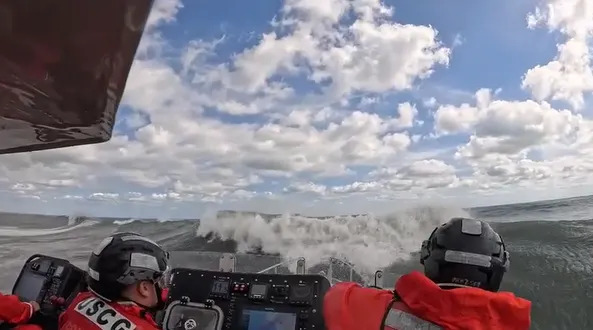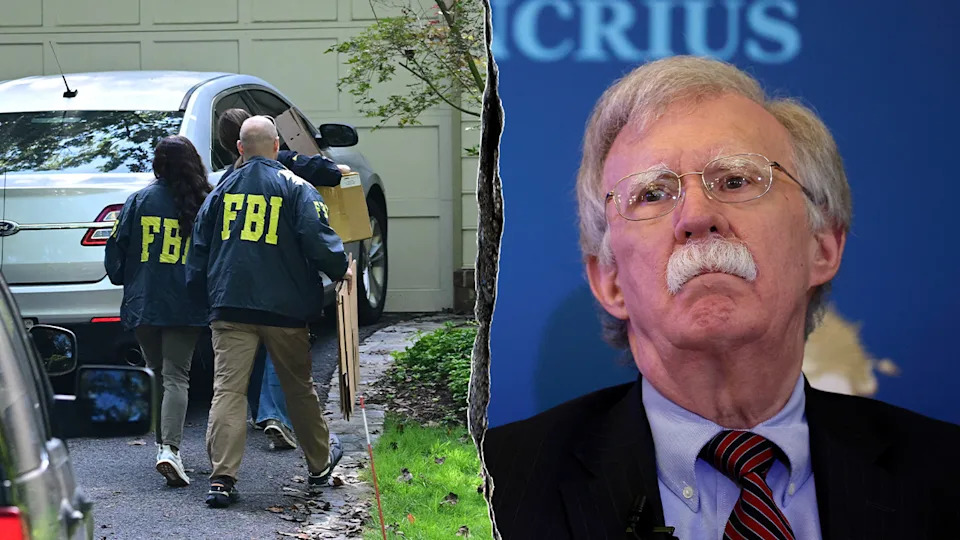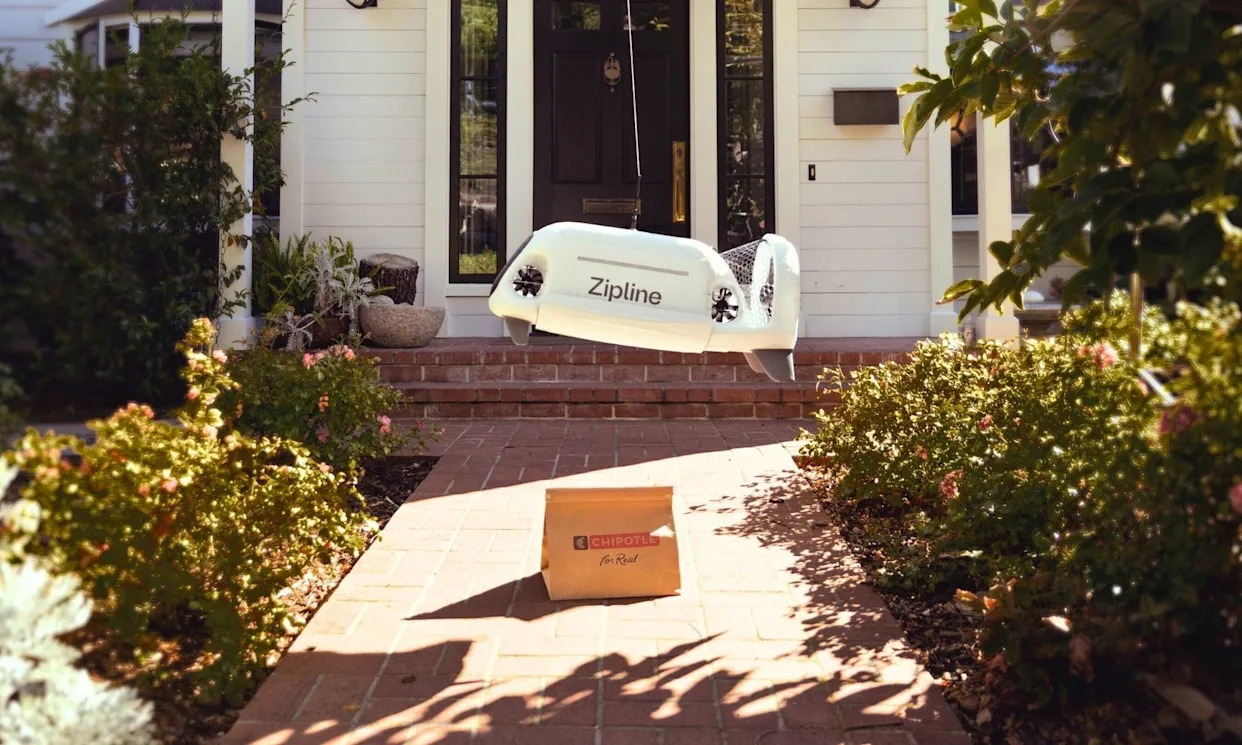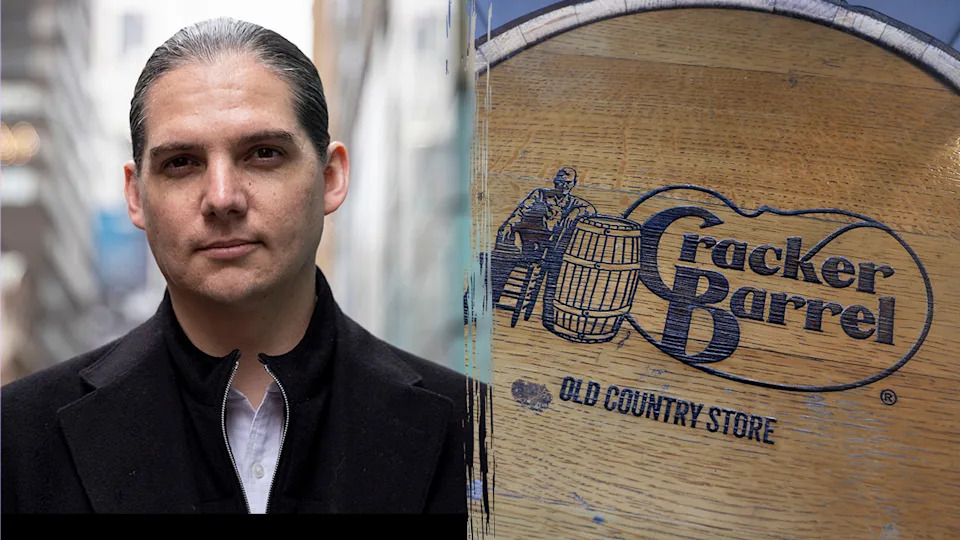
It has been one of the most tumultuous and significant weeks in the global political battle over the war in Ukraine. It began last Friday, with the cringe-worthy summit in Alaska between President Donald Trump and Russian President Vladimir Putin, followed just three days later by seven of Europe’s most prominent leaders rushing to Ukrainian President Volodymyr Zelensky’s side, arriving at the White House to provide backup for a hastily scheduled meeting with Trump.
The unprecedented series of events resulted in Trump ceding to at least two of Putin’s most harmful demands: no cease-fire in Ukraine and no additional sanctions on Russian oil and gas.
Russia inched ever-closer to its goal of re-entering the global economy, unshackled by increased sanctions and with hefty benefits for the world’s largest fossil fuel companies in return, even offering up lucrative deals to ExxonMobil as the summit got underway. Ukraine tried to compete, proffering oil and gas contracts and an oil refinery project under the special terms reserved exclusively for American companies under Trump’s U.S.-Ukraine minerals agreement. Efforts are also underway to facilitate the increased sale of Russian oil and gas under the cover of American ownership.
The negotiations failed to quell Russia’s brutal war against Ukraine, which raged on, claiming lives and treasure as the talks took place. Instead, the episode underscored a treacherous new global balance of power, in which the U.S. government under Trump continues to ally with the world’s most brutal autocrats and dictators.
“Putin was completely shunned by the West, and here we have an American president who’s invited him to Alaska for something so symbolic and so important and he hasn’t even had to do anything to get there, except for continue fighting in Ukraine,” Sergey Radchenko, a Cold War historian at Johns Hopkins University, tells me. “Putin probably sees himself as having been able to score a major victory without paying anything for it.”
The summit, ostensibly about ending the war in Ukraine, focused as much if not more on opening investment and business collaborations between the U.S. and Russia. Though the “Ukrainian question” was declared to be the main item of the agenda, “much more important global issues” would be raised in Alaska, including ambitious plans for U.S. and Russian energy cooperation, senior Russian lawmaker Sergey Gavrilov told The Wall Street Journal ahead of the summit.
“Under the cover of the peace talks, Putin is just looking for political and economic gain including easing global economic pressure,” Yuliia Melnyk, an environmental policy consultant and the co-founder and director of Ukrainian environmental organization, Ekoltava, tells me. “One of the key solutions to this war is breaking dependence on fossil fuels.”
“I thought this war was black and white, who the bad guys are, but I don’t see the U.S. as the ‘good guy’’ anymore, and that means that the order of the world as it was is not collapsing, but you can see cracks,” Ukrainian Mariia Freeman tells me, sadness filing her voice. “It started with my country and the price for that is in lives.”
I met Freeman on a busy street corner in downtown Anchorage, Alaska, standing amid a sea of blue and yellow Ukrainian flags and bright yellow sunflowers. She had joined hundreds of other people lining the streets to protest the war in Ukraine on the eve of the summit. Smiling, waving, and holding up signs reading, “Where’s Zelensky?” “Stay home dictators!” and “I can see fascists from my window,” their chants were routinely drowned out by the booming horns of trucks and the honks of passing cars expressing solidarity. Freeman’s family fled Luhansk city in the Donbas region of Ukraine in 2014 following the Russian occupation and annexation, only to be forced out of Ukraine altogether after Putin’s 2022 full-scale invasion and war, the deadliest war in Europe since World War II.
Freeman now lives in Anchorage. “It feels like Putin is following me,” she says.
At the Alaska summit, Putin took a victory lap around Trump, beaming all the while. Trump, who loves autocrats and dictators — especially the fossil-fueled kind — and is doing his best to become one within the strained confines of American democracy, was devoid of his characteristic bombast, appearing instead visibly submissive to Putin.
Images of a red carpet literally rolled out for Putin to step from his plane and onto U.S. soil dominated Ukrainian social media, posted and reposted with expressions of shock and outrage. It was the opening salvo to a hero’s welcome on the tarmac of the U.S. military’s Joint Base Elmendorf-Richardson in Anchorage where Trump and Putin stood laughing and smiling together.
The International Criminal Court in The Hague issued an arrest warrant for Putin in 2023, charging him with war crimes in Ukraine. This means that he can only travel to those countries where the government won’t immediately hand him over to the court. Lucky for Putin, the U.S. is not a party to the ICC, so Trump was not obligated to turn him in, and had no intention of doing so.
Standing on the tarmac, ABC news reporter Rachel Scott shouted, “President Putin, will you stop killing civilians?” Both men shrugged it off, as her repeated questions were drowned out by handlers yelling loudly, “Thank you press, thank you press.” Putin then hopped into the “Beast,” the U.S. presidential limousine, riding side-by-side with Trump.
I joined a who’s-who of U.S., Russian, and other global media restricted to a nearby press tent watching the arrival unfold on our laptops. We noted other clues as to how the day’s events would unfold, watching video of Russian Foreign Minister Sergey Lavrov arrive in Alaska wearing a CCCP shirt, the Russian letters for the former Soviet Union of which Ukraine was once a part. (Alaska was also once a part of the Russian Empire.) A neighbor leaned in close to me and whispered conspiratorially, “I heard that on their flight to Alaska, Russia media were served Chicken Kyiv.”
The Russians smoked while we waited for hours alongside a row of porta-potties for the big event — a joint press conference between the two presidents. Around 2 p.m., we were rushed out of the tent and into a small well-kept theater.
If you watched the press conference live, you’d be forgiven for thinking you’d stumbled upon Russian television, as it was primarily conducted in Russian (we wore headphones providing translation). Against a blue and white backdrop reading, “Pursuing Peace,” Putin entered the stage and spoke first, delivering an 8.5 minute soliloquy. He emphasized his close bromance with Trump, whom he first identified merely as “my American counterpart”; the historic ties that bind Russia and the U.S., including the defeat of “common enemies”; and the “tremendous potential” of economic and trade ties, including in both the U.S. and Russian oil and gas-rich Arctic.
Putin mentioned Ukraine just five times, stating that “today’s agreements” would be a starting point for “the Ukrainian issue.” He called for peace, while reiterating his long-standing demand to end the “root causes of the war.” This is Putin’s shorthand for his list of maximalist demands on Ukraine, which rejects any cease-fire agreement and NATO membership, would neuter Ukraine’s military, cedes all areas of Ukraine now under Russian control to Russia, requires new elections (which Putin anticipates will replace Zelensky with a Russian-friendly puppet), and an end to sanctions on Russia.
Trump looked cowed and tired when it was his turn on the mic, speaking in a low gravelly voice for just a few minutes — a fraction of Putin’s time. He also emphasized their close relationship and praised the “tremendous Russian business representatives here.” He said they’d reached agreement on most key items and that he’d promptly call Zelensky and European leaders.
“Next time in Moscow!” Putin said, a huge smile spreading across his face as Trump wrapped up. “I could see it possibly happening, thank you very much, Vladimir,” Trump meekly replied.
They did not take a single question from reporters — highly unusual for Trump, but just the way Putin likes it. I had already noticed Fox News’ Sean Hannity standing behind me, a shit-eating grin on his face. As they walked rapidly off the stage, Hannity followed and promptly conducted an exclusive half-hour, one-on-one interview with Trump in the same room where the summit took place.
No Cease-Fire, No Sanctions
Hannity and Trump traded thinly veiled barbs — Trump noted that “some people say you’re not smart,” to which Hannity later retorted, that “some people say that you’re doing all of this work, none of which benefits the U.S.” But the tete-a-tete served both men’s purposes. Hannity hawked his radio and TV shows, and Trump made sure that Zelensky heard three key words: “Make a deal,” Trump said. “He’s got to make a deal. Russia is a very big power.” He added, “we’re number one, their number two.”
Going into the summit, Trump repeated his demand that Putin agree to a cease-fire and threatened increased sanctions on Russian finance, oil, and gas if he did not. Trump had begun to act on the threats weeks earlier, but in a monumental concession to Putin, ultimately capitulated on both demands once the summit concluded.
Unlike Trump, Yuriy Vitrenko has gone head-to-head against Putin and won. Vitrenko is the former head of Ukraine’s state energy company and Ukraine’s former Acting Minister of Energy. He runs AYA Capital, which is trying to bring foreign investment into Ukraine. He has sat across the negotiating table from Putin and ultimately won two significant legal cases worth billions of dollars against Putin’s prize oil and gas company, Gazprom, which Vitrenko describes as “Putin’s favorite geopolitical tool.”
“For Putin, energy is the pillar of Russia’s strength and as a result its position in the world and his own claim to be above the law,” Vitrenko tells me. Russia’s vast oil and gas provides the money that fuels its military might and Putin’s imperialist cravings, Vitrenko says.
Trump, notably, started his interview with Hannity by first praising Putin, and then Russia’s incredible oil and gas.
When Putin invaded Crimea in 2014, President Barack Obama imposed sanctions targeting Russia’s oil and gas, including its Arctic operations. Following Russia’s full-scale invasion of Ukraine in 2022, President Joe Biden joined world leaders in a much more aggressive global sanctions effort targeting not just Russian fossil fuels but also incentivizing a global movement off fossil fuels more broadly as the best path towards a lasting peace.
“Everyone felt this, they knew that if we want to stop Russia, we must get rid of fossil fuels,” Ukrainian environmental lawyer, Svitlana Romanko, founder and director of Razom We Stand, tells me. “We started organizing together to make a public call which was to end the global fossil fuel addiction that feeds Putin’s war machine.”
It’s been working. “Russia’s fossil fuel export revenues have fallen since the sanctions were implemented, subsequently constricting Putin’s ability to fund the war,” reports U.K.-based research organization, Centre for Research on Energy and Clean Air. Russia’s total revenue from all fossil fuel exports in July 2025 was nearly 40 percent lower than in July 2022, Isaac Levi, Europe-Russia Policy and Energy Analysis Team Lead at the Centre, tells me.
“The reason why Putin is out there in Alaska is to negotiate the removal of sanctions, which shows how important sanctions are on the Russian energy sector and economy,” Levi argues. But, he adds, “fossil fuel sanctions can and should be made much stronger.”
Russia still produces and exports large amounts of fossil fuels, but it’s receiving far less money in return. With 40 percent of Russia’s federal budget from oil and gas prior to the war, the toll on the economy has been significant. Russia’s shrinking pool of buyers is now dominated by China, with India a distant second (importing about half as much as China). Next comes Turkey followed by the European Union, which banned Russian oil imports, but continues to rely on Russian gas.
In late July, Trump signed a new tariff arrangement with the European Union, requiring that it purchase U.S. energy. Ursula von der Leyen, president of the European Commission, wrote of the agreement, “We will replace Russian gas and oil with significant purchases of U.S. [liquified natural gas], oil, and nuclear fuels.” It’s a stunning reversal of her previous response to the war, writing in 2022 that the European Union “must get rid of its dependency on fossil fuels” altogether.
Romanko is incredulous that the EU would see swapping dependence from Russian to U.S. energy as a solution. The priority is getting off “Russia’s blood gas,” she explains, and the best way to do this is “just go green!”
On August 6, Trump took his most forceful action to date, announcing a 25 percent tariff on imports from India as a penalty for importing Russian oil — bringing India’s U.S. tariff rate to a devastating 50 percent. Trump also threatened tariffs on China, but then backed off, telling Hannity they were off the table, at least for now, “because of what happened today” in the summit with Putin. The Indian tariffs also do not take effect until August 27, and several experts now doubt that they ever will.
“Trump made it very clear that he is not going to impose any additional sanctions on Russia for at least the next couple of weeks, which is already a good result for Putin,” Tatiana Mitrova, a research fellow at Columbia University’s Center on Global Energy Policy, tells me. Mitrova previously served as Executive Director of the Energy Centre of the Moscow School of Management.
She sees the tariffs on India as more of a Trump negotiating ploy. “I assume that it’s really an opportunity for Indian authorities to suggest something attractive to Trump” to get him to drop the Russian oil tariffs, Mitrova says.
Ukrainian environmental consultant Melnyk argues that governments should implement “rule of law conditionality” that blocks purchases of fossil fuels from “authoritarian regimes that violate international law and human rights.”
‘We Make Big Bucks’
Well before arriving in Alaska, Putin and Trump personally discussed cooperation in the energy sector. For months, the U.S. and Russia have been negotiating lucrative oil and gas deals that would result in the lifting or easing of Russian sanctions. These include partnerships in the Arctic, liquified natural gas transit, and pipelines carrying Russian oil and gas to Europe, including within Ukraine through a U.S.-Ukraine minerals agreement.
Following a phone call between Trump and Putin in February, Secretary Marco Rubio and Middle East envoy Steve Witkoff met with Russian Foreign Minister Sergei Lavrov and Putin’s Foreign Policy Advisor Yuri Ushakov in Saudi Arabia, laying the groundwork for “historic economic and investment opportunities” resulting from “the end to the conflict in Ukraine,” according to the State Department. Ahead of the meeting, Russian Direct Investment Fund chief Kirill Dmitriev told reporters that the return of oil companies to Russia is inevitable. On March 3, the White House directed the State and Treasury departments to draft a list of sanctions that could be eased for U.S. officials to discuss with Russian representatives.
All of these officials, as well as Treasury Secretary Scott Bessent, attended the summit in Alaska.
Many people now “expect that sanctions on Russia will be lifted,” Mitrova tells me. “Lavrov mentioned in his interview right before the summit that he expects that at least some of the sanctions will be removed.”
On the day of the summit, Putin underlined the point, signing a decree that would allow ExxonMobil and other foreign investors back into the Russian Arctic once sanctions are removed. Mitrova points to “very interesting wording” which requires the companies to work for the “removal of political and economic sanctions which negatively affect the project, including going to court.” She adds, “I think it’s mainly signaling Trump that ‘we are ready to open the doors again to the U.S. business, but you guys have to remove sanctions because otherwise they cannot work in Russia.’”
As I reported in March, sanctions — combined with public opinion — forced most U.S. and other Western oil companies out of Russia and its vast oil and gas reserves. ExxonMobil was forced to abandon its stake in the Russian Arctic offshore Sakhalin-1 project, which is the target of Putin’s decree. Rex Tillerson, the former CEO of ExxonMobil and later Secretary of State in Trump’s first administration, carefully built up a close relationship with Putin, ultimately establishing 10 joint ventures between Exxon and Russia’s state-controlled oil company, Rosneft, by 2013. As a result of these deals, Exxon’s 63.7 million-acre Russian holdings were nearly five times larger than its second-largest holdings — its 14 million acres in the United States. With the imposition of sanctions in 2014, Exxon was largely shut out of these operations, and then fully shut out as result of the 2022 invasion.
“We’re talking about hundreds of billions of dollars,” says Vitrenko. “That’s the sizable kind of pie that makes it attractive for big U.S. businesses that are also politically powerful, and they can deliver a message to the administration that says, ‘We make big bucks in Russia, so why don’t you just find the compromise for them?’”
U.S.-Ukraine “Minerals Deal” Bears Fruit
I reported in March on the U.S.-Ukraine “minerals agreement,” calling it a “fossil fuel shakedown.” The agreement, which gives the U.S. unprecedented influence over Ukraine’s energy sector, was signed not long after the calamitous Oval Office meeting in February between Trump and Zelensky. Zelensky was forced to accept the deal given how closely aligned the Trump regime became with Putin.
Despite Trump’s repeated references to “rare earth minerals”, the agreement covers all of Ukraine’s natural resources, including oil, gas, and coal, and related infrastructure, such as pipelines, the bulk of which are found in areas of Ukraine now controlled by Russia. The agreement is focused on fossil fuels and is already yielding fruit for the U.S. and Russia.
The day before the summit, Ukraine announced the sale of two oil and gas blocks with special terms for U.S. investors, “with the right for a U.S. partner to purchase the output and a guarantee that no better terms will be offered to other participants,” noting that the terms were designed to fulfill the minerals agreement. Ukraine has also offered U.S. investment in an oil refinery — the nation’s largest petroleum production site, owned and operated by Ukraine’s largest oil company, the state-owned Ukrnafta.
Ukraine has its own agenda behind the offerings, hoping that they’ll come with security guarantees. Zelensky met with U.S. companies operating in Ukraine in July to discuss the need for additional air defenses to protect businesses and cities. “We understand that if there is U.S. investment in the country, there’s more motivation for the U.S. to protect (those assets),” Ukraine Prime Minister Yuliia Svyrydenko said.
The U.S. may also negotiate access for Russia to once again restart the flow of its gas through key Ukrainian pipelines. “The end game could be that the U.S. would allow certain limited volumes of Russian gas to transit via Ukraine, once the cease-fire or peace agreement is reached to the landlocked countries in Central Europe,” Mitrova says. Depending on the terms, this could be a profound victory for Russia which has long sought tighter control over the pipelines in Ukraine, but it’s an outcome the Ukrainians feel they may need to accept if it helps lead to peace in negotiations so profoundly stacked against them.
“Frankly, if somebody tells Ukraine that Russia will leave Ukraine, they will prosecute all the war criminals and pay reparations, [and] the only thing that Ukraine needs to do is to continue gas transit, probably Ukraine will continue gas transit,” Vitrenko tells me.
Russian Energy Dominance
“If this level of engagement between Russia and the U.S. continues, it’s very likely that there will be a resumption of Russian gas flows… involving U.S. intermediaries,” Reuters reported in May as officials from Washington and Moscow held discussions about the U.S. helping to revive Russian gas sales to Europe. “Sources close to the bilateral discussions said carving out a renewed role for Moscow in the European Union’s gas market could help cement a peace deal with Putin.”
Russian oil and gas would then be able to flow freely through pipeline agreements secured by the U.S. and with U.S. owners or investors.
Fossil fuels are the lifeblood of the Russian economy and the basis of Putin’s power. They have long dominated Russian-Ukrainian relations, with gas flowing through the heart of the conflict. In 2020, the EU received about 40 percent of its gas imports from Russia, an amount that has fallen by half today. Gazprom posted a $7 billion loss the first year of sanctions, and will again record huge losses in 2025, which are then expected to balloon to some $187 billion over the next 10 years.
Ukraine has always maintained the key role of delivering Russian gas to European markets via pipelines, dating back to the Soviet era. The government of Ukraine owns the pipelines, and Russia pays Ukraine transit fees, which have been a substantial source of revenue and conflict. Russia has sought for decades to either wrest greater control of its pipelines through Ukraine — which it could now achieve through the U.S.-Ukraine minerals agreement — or bypass Ukraine altogether through the construction of several alternative gas pipelines, the most significant of which is Nord Stream 2. The long-stalled project could now be revived as part of Trump’s economic negotiations with Russia.
Gazprom partnered with Shell and other companies to build the Nord Stream 2 gas pipeline from Russia under the Baltic Sea to Germany. Amid global pressure to constrain Russian aggression in Ukraine, German regulators did not issue the final permit for the pipeline. In September 2022, in an act of sabotage, three underwater explosions hit Nord Stream 2 and its parent pipeline, Nord Stream 1, leaving only one of the four gas links in the network intact to this day.
Russian energy expert Levi believes that Russia did it. “Blowing up Nord Stream sent energy prices through the roof,” he tells me, which allowed Russia to severely defray the impacts of lost gas sales and sanctions.
A group of U.S. investors is now seeking to revive Nord Stream 2, in a plan reportedly masterminded by Matthias Warnig, an ex-spy and close friend of Putin who until 2023 ran Nord Stream 2’s parent company for Gazprom, reports the Financial Times.
The team of U.S. investors includes Frank Petruzzi. Petruzzi works out of a coffee shop on the Youngtown University campus in Ohio, where a placard on the bar reads, “Reserved for Frank.” A recent profile in the Youngstown Ohio Business Journal lays out a bio for Petruzzi which reads like the portrait of a Russian agent from a 1950s spy novel. In 1988, Petruzzi began shepherding journalists to Moscow and then joined the Peace Corps’ business assistance program in Russia in 1994, ultimately spending the next two decades mostly living in Russia, sometimes unemployed or working with a variety of Russian business interests, “including an oligarch.”
Petruzzi said that his team submitted an application to the Treasury Department seeking clearance for the purchase of Nord Stream 2 last year. “The goal is to get that pipeline under the control of a U.S. group,” he explained, adding that there are several other deals with Russia that the group is working on.
Petruzzi’s main business partner is fellow Peace Corps-in-Russia alum, Stephen Lynch, who also lived in Russia for two decades. A Wall Street Journal interview of Lynch notes that questions have been raised about his ties to the Russian government. Lynch is a large Trump political donor and in 2022, he received a license from the Treasury Department to complete the acquisition of a Swiss subsidiary of a Russian bank that had been sanctioned by the U.S. government. In May, he met with German officials to discuss purchase of the pipeline, which the German government still vehemently opposes.
Elliott Investment Management, headed by billionaire and Republican mega-donor Paul Singer, is reportedly in talks in a separate deal to buy a stake in the TurkStream pipeline, Russia’s last operational gas conduit to Europe. TurkStream traverses the Black Sea to Turkey before feeding pipelines supplying Hungary, Slovakia, and other nations.
“If, say, the U.S. and Russia agree on cooperation in the energy sector, then a gas pipeline for Europe could be ensured,” Putin said at a briefing in Moscow. “And this will benefit Europe, as it will receive cheap Russian gas.”
Vitrenko, Ukraine’s former acting energy minister, explains that while smaller players may be willing to work with Russia with exemptions from existing sanction regimes, the largest U.S. companies will wait for some kind of peace agreement. “CEOs of big oil companies want to go back to Russia, but not at any cost,” he says. “It’s important that there is some kind of legitimacy.”
“They’re making themselves clear that that’s something that they would like to see,” he adds. “If Russia continues to be just an occupier, it’s very difficult for the Exxons of this world to invest in Russia. Frankly, they need it to be whitewashed. Without whitewashing, they won’t be able to do it.”
“Ambitions of a Dictator”
The day before the summit, John Hopkins’ University’s Radchenko described Putin’s vision for Ukraine to me as “something like Belarus-plus, a vassal state of Russia ruled by a dictator.” Hours later, aboard Air Force One, Trump placed a call.
“I had a wonderful talk with the highly respected President of Belarus, Aleksandr Lukashenko,” he wrote on social media. Lukashenko is one of the longest-ruling dictators in the world and one of Putin’s closest allies. Belarus’ state news service said that Trump accepted an invitation from Lukashenko to visit Belarus’ capital city, Minsk.
Viktor Orbán, Hungary’s authoritarian strongman beloved by the American far-right, is set to host a potential trilateral meeting between Trump, Zelensky, and Putin — though recent reports say Trump is now backing away from participating.
Advocates stress that a just peace process for Ukraine must follow the rules of international law, not illegal backroom dealmaking between autocrats and dictators.
“We cannot return to that dark energy future that empowers dictators like Putin, fuels wars, and locks the world into fossil dependence,” says Romanko, of Rozam We Stand. “We need our full territories back, and an energy transition just as strong so that future generations of Ukrainians never again face a fossil-fueled monster, encouraged and sugarcoated by appeasement, red carpets, and the like.”
Mariia Freeman, the Ukrainian from Luhansk, has been standing on street corners in Anchorage protesting against the war in Ukraine for almost four years. “It’s better than sitting at home alone feeling depressed by the news,” she tells me. Seeing hundreds of people turn up to join her the day before the summit, “all those people who care,” she says, “was empowering.”
Later, reflecting on the failures of the Trump-Putin summit, Freeman shares a warning.
“Trump’s actions since taking office have all led to this,” she says. “It’s the ambitions of a dictator.”
More from Rolling Stone
Best of Rolling Stone
Sign up for RollingStone's Newsletter. For the latest news, follow us on Facebook, Twitter, and Instagram.








Comments